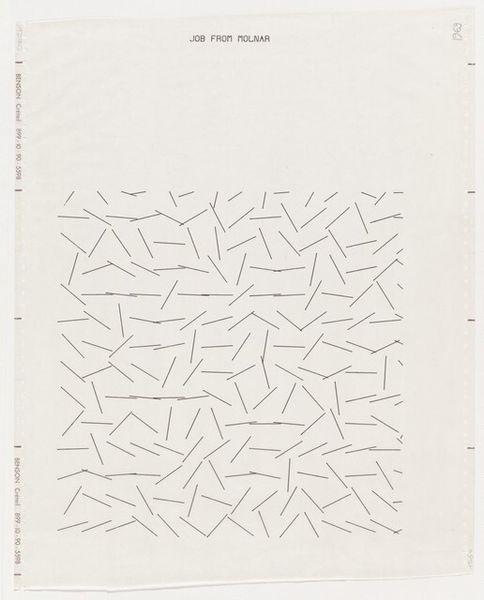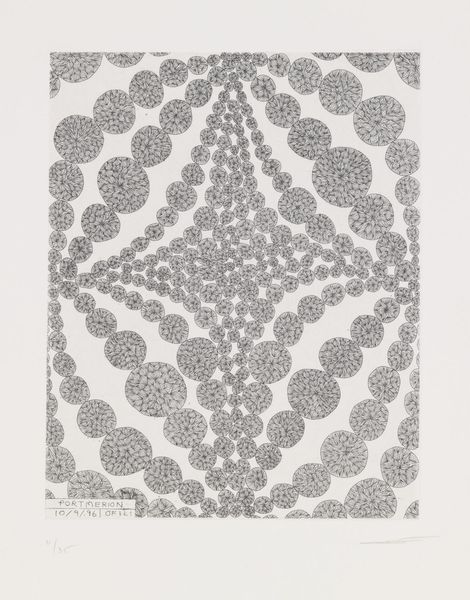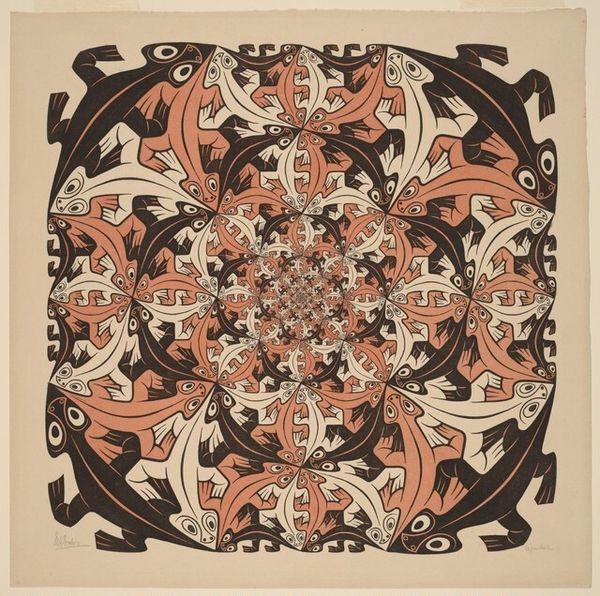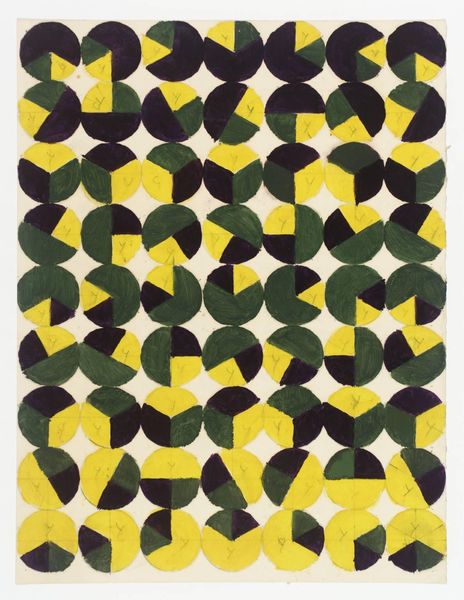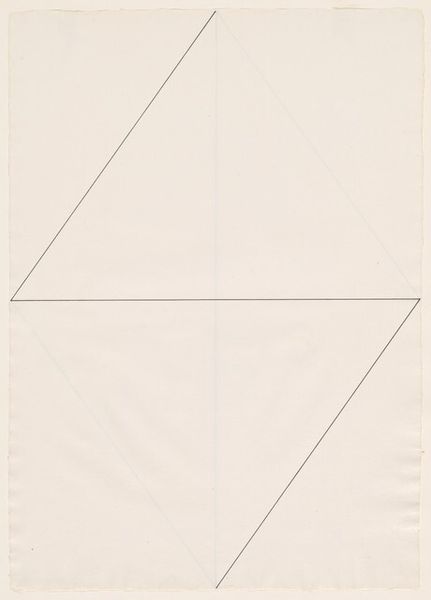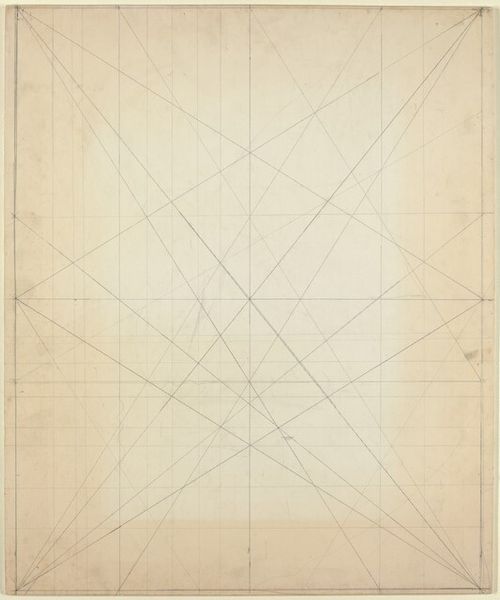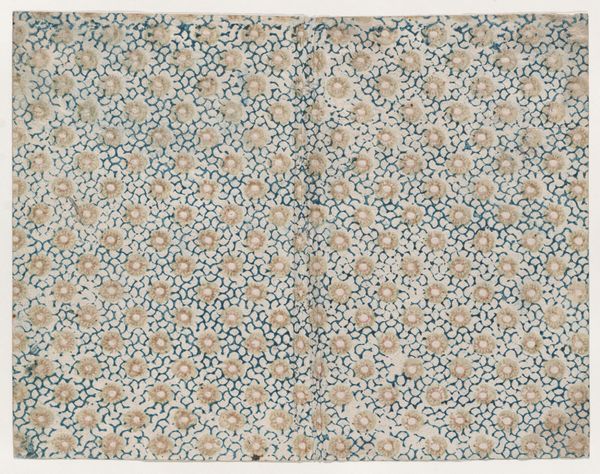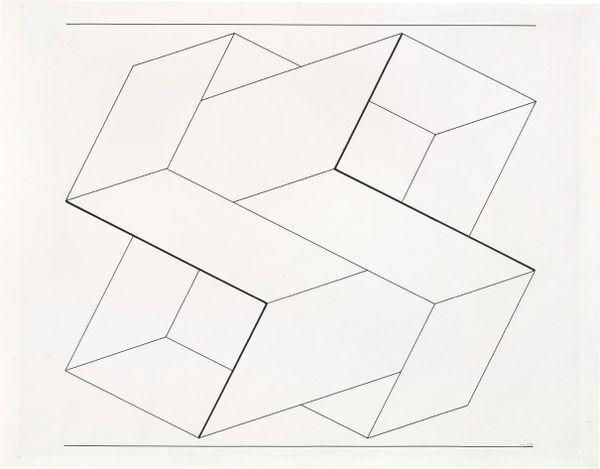
drawing, print
#
drawing
#
op-art
# print
#
geometric
#
abstraction
Dimensions: sheet: 30.3 × 22.6 cm (11 15/16 × 8 7/8 in.)
Copyright: National Gallery of Art: CC0 1.0
Editor: This is M.C. Escher's "Symmetry No. 131," a drawing and print from 1967. It's incredibly striking – the high contrast between the black and white shapes really catches the eye, almost like a tessellated field of stars. How do you interpret this work and its visual impact? Curator: The impact resonates through its masterful handling of symmetry, of course, but beyond mere aesthetic pleasure, the repeated motif and sharp delineation remind us of the visual language inherent in our own brains. Don’t the contrasting black and white components carry a yin-and-yang relationship? Can we find a link between the dark versus light and perhaps the dualities and complementarities evident in the world? Editor: Absolutely! It's almost meditative, that interplay. The pattern suggests balance. Curator: Yes! There's an inherent order, but an order that subtly plays on the viewers’ perceptions. The eye shifts back and forth; it attempts to resolve foreground and background, a challenge presented by the visual cues and symbol combinations the artist included. Do you think the visual "trick" is as significant as the beauty of the artwork itself? Editor: I hadn't thought about that... Maybe both elements are essential. The 'trick' draws you in, but the symmetry keeps you captivated. It seems Escher is referencing more than meets the eye at first glance. Curator: Indeed. Perhaps this piece nudges at our innate desire to impose order onto chaos, to discern recognizable symbols amidst abstract forms. Visual symbolism, even when subtly placed, evokes complex interpretations! I leave you with that thought to further unpack the many symbolic layers!
Comments
No comments
Be the first to comment and join the conversation on the ultimate creative platform.
